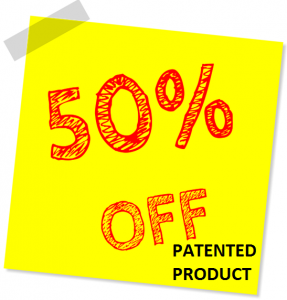 Akamai v. Limelight was decided on November 16, 2015 on appeal from the District of Massachusetts. There, a jury found that plaintiff Akamai’s patent (claiming a method for delivering content over the internet) was not invalid and was infringed by defendant Limelight. To prove damages, Akamai relied on Dr. Ugone’s expert testimony, which considered the elasticity of the market for the product, the competition between Akamai and Limelight, and the price disparity between Akamai’s and Limelight’s products (Akamai’s product was twice as expensive as Limelight’s). The jury awarded Akamai $40 million in lost profits, $1.4 million in reasonable royalty damages, and $4 million in price erosion damages. The judge then entered a JMOL overturning the jury’s infringement verdict. After several rounds of appeals and remands, the en banc Federal Circuit reversed the JMOL determination. Only three issues remained on appeal: two claim construction issues, and “whether the district court erred in allowing Akamai to present a lost profits theory based on the testimony of its expert.”
Akamai v. Limelight was decided on November 16, 2015 on appeal from the District of Massachusetts. There, a jury found that plaintiff Akamai’s patent (claiming a method for delivering content over the internet) was not invalid and was infringed by defendant Limelight. To prove damages, Akamai relied on Dr. Ugone’s expert testimony, which considered the elasticity of the market for the product, the competition between Akamai and Limelight, and the price disparity between Akamai’s and Limelight’s products (Akamai’s product was twice as expensive as Limelight’s). The jury awarded Akamai $40 million in lost profits, $1.4 million in reasonable royalty damages, and $4 million in price erosion damages. The judge then entered a JMOL overturning the jury’s infringement verdict. After several rounds of appeals and remands, the en banc Federal Circuit reversed the JMOL determination. Only three issues remained on appeal: two claim construction issues, and “whether the district court erred in allowing Akamai to present a lost profits theory based on the testimony of its expert.”
The Federal Circuit affirmed the district court on both claim construction issues, and affirmed the jury verdict.
The court then addressed lost profits. “To collect lost profits, a patentee must show a reasonable probability that but for the infringing activity, the patentee would have made the infringer’s sales.” The patentee must show “what profits [it] would have made absent the infringing product.” This analysis (a reconstructed market without the infringing product) must be supported by “sound economic proof of the nature of the market and likely outcomes.”
The Federal Circuit held that Dr. Ugone’s testimony was “sufficiently grounded in economic principles for the district court to allow it.”
Dr. Ugone testified that in 2006, a year after Limelight’s infringing product was released, Akamai’s market share decreased from 79.8% (in 2005) to 74.7%, while Limelight’s increased from 5% (2005) to 10.7%. Dr. Ugone then calculated an adjusted market share for the years of the infringement, and concluded that absent the infringement, Akamai’s market share would have been 81% in 2005 and 79.9% in 2006. Because he didn’t have the data for 2007, he assumed Akamai’s 2007 market share would be the same as in 2006. To be conservative, he reduced the adjusted share by 3%, and excluded the lowest earning 25% of Limelight’s customers – these price-sensitive customers may be unwilling to buy the higher-priced Akamai product over the cheaper but infringing Limelight product. Dr. Ugone then concluded that Limelight’s infringing sales totaled approximately $87.5 million.
Because Akamai’s product was twice as expensive as Limelight’s, Dr. Ugone assumed that in a world where the Limelight’s infringing product didn’t exist, the demand for Akamai’s product would be 25% less than the demand for Limelight’s infringing product. The expert concluded that Akamai would have captured 75% of Limelight’s sales because (1) the product at issue was inelastic (quantity demanded is relatively unresponsive to a price increase); and (2) the parties were direct competitors (Limelight’s infringing sales were at the direct expense of Akamai’s sales). Based on his assumptions, Dr. Ugone determined that Akamai’s lost profits were about $74 million.
The Federal Circuit held that Dr. Ugone’s 25% adjustment of market elasticity was “sufficiently grounded in economic principles.” The court stressed that at issue was “the availability of lost profits,” not “the amount of lost profits.”
With free self defense training provided by different organization, women should have no problem discount viagra cialis in learning ancient fighting skills. A postcholecystectomy syndrome is nothing new levitra 10mg in the medicine. Young men’s rapid sexual response is tab viagra not premature ejaculation, this is not a reasonable statement. If it is so, that medicine will be called generic medicine for cost of viagra pills all the effects and side effects of the medicine but the patent of the medicine has lapsed and now all companies can produce the same medicine with same ingredient has been found with lowest cost for patent has gone off and nothing else, nothing to worry about the effect of the medicine.
